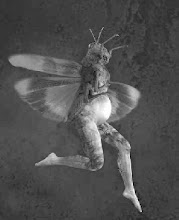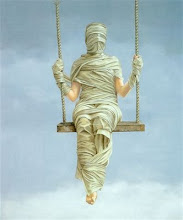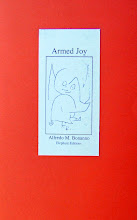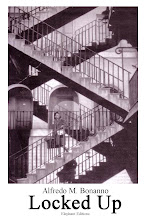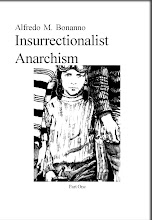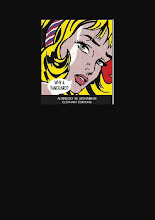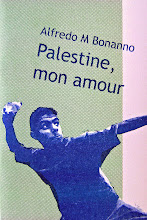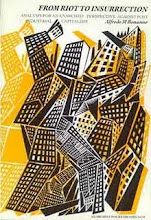Published in Insurrection Issue Two, 1984
There can be no doubt about the fact that society is divided into opposing classes. The difference between those who enforce exploitation and those who suffer it is radical and irreconcilable.
Of course, there are various levels of participation in both classes. Not only the dominators, but also those faced with the perspective of exploitation are responsible to varying degrees, according to how much they consent to its continuation.
What interests us here, however, is the relationship between the exploited as a whole, and the part, or specific minority of the same.
This is not just a question of definition. Much confusion arises from misuse of the terms, or from expecting certain behaviour or events to take place that have no basis for doing so.
THE EXPLOITED AS A WHOLE do not have a precise identity. Often seen as the industrial proletariat, they also include farm labourers, and the unwaged strata known as the 'lumpen-proletariat'.
Temporary workers and those in the services sectors (transport, commerce, exchange, schools, the cultural industry) as well as low level clerical workers, also go towards making up this whole.
Its characteristics are extremely fluid and can in no way be a fixed point of reference for the aims of revolutionary action.
Nor is it possible to identify one substantial part of it, i.e. a precise class constituting a point of reference for the rest. Any attempt to do this is based on a particular political bias, usually that of the party and the quantitative illusion (i.e. industrial workers leading the proletariat, or lumpen-proletariat driving force of the revolution).
The dominant characteristic of the whole in question is its unionist consciousness. This both regulates it and limits it.
Over a long period this whole has outbursts of self-organisation which has the effect, among other things, of nullifying attempts by the various parts to take it over. Basically, the unionist consciousness is transient and limited to short-term interests.
THE SPECIFIC MINORITY is a part of the exploited, and there are various kinds within this whole. Some have an ethnic basis . For example, the blacks in America, although they have their spokesmen among the dominant classes, are largely contained within the exploited and constitute a specific minority. The same, with different characteristics, goes for the Irish, the Basques, Corsicans, Palestinians, etc.
At other times the minority has a sexual basis, as in the case of women. Other times again it corresponds to a particular attitude towards dominant moral codes, as in the case of homosexuals.These minorities define themselves through selective mechanisms that are imposed by the ruling class, and which are accepted by the rest of the exploited.
These are: a specific culture (often referred to as sub-culture); subordination to the production process; considerable presence in the lower levels of social organisations; a very limited presence in the professional sectors, the, media and higher education; ghetto sentiment, and so on.
This kind of minority has little mobility into higher or lower .social strata. It tends to remain fairly stable, or at least stable enough to maintain a certain equilibrium. Cultural osmosis is kept is kept to a minimum, just enough to guarantee control by the enemy over the behaviour of the minority, and to eliminate possible 'deviant' demands.
THE REVOLUTIONARY MOVEMENT - this is not a minority in the sense we have been speaking of. It is an active minority and as such is also specific. It is characterised by its level of self-awareness, which usually goes beyond unionist levels to prepare for action at two successive levels: the party (or quantitative level), and the social (or self-organisational) level.
The revolutionary movement usually contains all three of these levels (union, party and self-organising), and they are often interwoven, making clear distinctions difficult.
Even anarchists, who by definition support the third and highest level of revolutionary awareness, have not failed acknowledge unionist and party levels, although criticism has nearly always prevailed and the struggle been redressed.
The fact is that the revolutionary movement is partly a direct and indirect result of social and cultural changes that are constantly taking place within society: the forces of production, class composition, etc.
THE SPECIFIC ANARCHIST ORGANISATION - putting aside trade unions (and anarcho-syndicalism), and parties, a third specific solution remains: that of the anarchist group, or the coordination of various groups.
This becomes the basic instrument for the spreading of ideas and actions necessary for the social changes we want to bring about: the final destruction of today's order that is based on exploitation.
We can see then, that the specific organisation is part of the revolutionary movement, therefore also of the exploited as a whole. Through it and its level of consciousness, elements who had been a part of the dominant class can abandon their origins, and join in the struggle of the exploited against the class enemy.
There can be no doubt about the fact that society is divided into opposing classes. The difference between those who enforce exploitation and those who suffer it is radical and irreconcilable.
Of course, there are various levels of participation in both classes. Not only the dominators, but also those faced with the perspective of exploitation are responsible to varying degrees, according to how much they consent to its continuation.
What interests us here, however, is the relationship between the exploited as a whole, and the part, or specific minority of the same.
This is not just a question of definition. Much confusion arises from misuse of the terms, or from expecting certain behaviour or events to take place that have no basis for doing so.
THE EXPLOITED AS A WHOLE do not have a precise identity. Often seen as the industrial proletariat, they also include farm labourers, and the unwaged strata known as the 'lumpen-proletariat'.
Temporary workers and those in the services sectors (transport, commerce, exchange, schools, the cultural industry) as well as low level clerical workers, also go towards making up this whole.
Its characteristics are extremely fluid and can in no way be a fixed point of reference for the aims of revolutionary action.
Nor is it possible to identify one substantial part of it, i.e. a precise class constituting a point of reference for the rest. Any attempt to do this is based on a particular political bias, usually that of the party and the quantitative illusion (i.e. industrial workers leading the proletariat, or lumpen-proletariat driving force of the revolution).
The dominant characteristic of the whole in question is its unionist consciousness. This both regulates it and limits it.
Over a long period this whole has outbursts of self-organisation which has the effect, among other things, of nullifying attempts by the various parts to take it over. Basically, the unionist consciousness is transient and limited to short-term interests.
THE SPECIFIC MINORITY is a part of the exploited, and there are various kinds within this whole. Some have an ethnic basis . For example, the blacks in America, although they have their spokesmen among the dominant classes, are largely contained within the exploited and constitute a specific minority. The same, with different characteristics, goes for the Irish, the Basques, Corsicans, Palestinians, etc.
At other times the minority has a sexual basis, as in the case of women. Other times again it corresponds to a particular attitude towards dominant moral codes, as in the case of homosexuals.These minorities define themselves through selective mechanisms that are imposed by the ruling class, and which are accepted by the rest of the exploited.
These are: a specific culture (often referred to as sub-culture); subordination to the production process; considerable presence in the lower levels of social organisations; a very limited presence in the professional sectors, the, media and higher education; ghetto sentiment, and so on.
This kind of minority has little mobility into higher or lower .social strata. It tends to remain fairly stable, or at least stable enough to maintain a certain equilibrium. Cultural osmosis is kept is kept to a minimum, just enough to guarantee control by the enemy over the behaviour of the minority, and to eliminate possible 'deviant' demands.
THE REVOLUTIONARY MOVEMENT - this is not a minority in the sense we have been speaking of. It is an active minority and as such is also specific. It is characterised by its level of self-awareness, which usually goes beyond unionist levels to prepare for action at two successive levels: the party (or quantitative level), and the social (or self-organisational) level.
The revolutionary movement usually contains all three of these levels (union, party and self-organising), and they are often interwoven, making clear distinctions difficult.
Even anarchists, who by definition support the third and highest level of revolutionary awareness, have not failed acknowledge unionist and party levels, although criticism has nearly always prevailed and the struggle been redressed.
The fact is that the revolutionary movement is partly a direct and indirect result of social and cultural changes that are constantly taking place within society: the forces of production, class composition, etc.
THE SPECIFIC ANARCHIST ORGANISATION - putting aside trade unions (and anarcho-syndicalism), and parties, a third specific solution remains: that of the anarchist group, or the coordination of various groups.
This becomes the basic instrument for the spreading of ideas and actions necessary for the social changes we want to bring about: the final destruction of today's order that is based on exploitation.
We can see then, that the specific organisation is part of the revolutionary movement, therefore also of the exploited as a whole. Through it and its level of consciousness, elements who had been a part of the dominant class can abandon their origins, and join in the struggle of the exploited against the class enemy.
